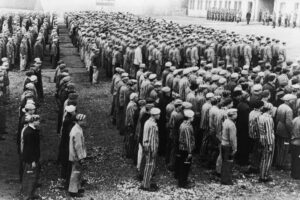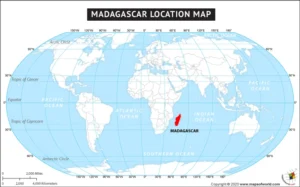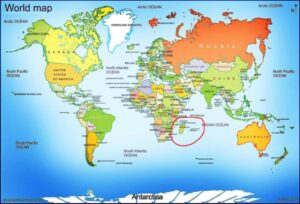During World War II, Nazi Germany devised a plan to address what they perceived as the “Jewish problem” through mass deportation. The Madagascar Plan, proposed in the 1930s, aimed to relocate the Jewish population to the island of Madagascar. This article explores the origins, implementation, reasons, and controversies surrounding this controversial proposal.




Origins of the Madagascar Plan:
The notion of Jewish relocation was first proposed by Franz Rademacher, head of the Jewish Department of the German Foreign Office, in June 1940. The plan drew inspiration from the historical use of exile, seeking to isolate Jews from the rest of society and create a racially homogeneous Germany.
Implementation of the Plan:
The initial phase of the Madagascar Plan envisioned the deportation of German and Polish Jews to the island of Madagascar. To facilitate this large-scale migration, the German Navy would provide transportation, and various European countries under Nazi occupation would cooperate in the process. However, due to the outbreak of war and limited resources, the plan’s full execution never materialized.
Reasons behind the Proposal:
Several factors contributed to Nazi Germany’s consideration of Madagascar as a potential destination for Jewish resettlement:
1. Overpopulation: Germany saw the Jewish population as overburdening its resources and sought to remove them from its borders.
2. Colonial Ambitions: Germany’s desire to expand its territorial control and establish colonies played a role in considering Madagascar as a potential destination.
3. Racial Separation: The Nazis believed in the superiority of the Aryan race and sought to create a racially pure society by segregating Jews from non-Jewish Germans.
Controversies and Criticisms:
The Madagascar Plan faced several significant challenges and controversies:
1. Feasibility: The logistical challenges of transporting millions of people over long distances, securing adequate supplies, and establishing infrastructure on the remote island were overwhelming, rendering the plan highly unrealistic.
2. International Rejection: Other countries, including France, the colonial power controlling Madagascar, rejected the proposal and refused to cooperate in implementing the plan.
3. Humanitarian Concerns: Many critics voiced concerns about the harsh conditions that Jews would face on an isolated island, as well as the potential for deadly diseases, food shortages, and limited access to healthcare.
4. Final Solution: The Madagascar Plan eventually took a backseat to the Nazis’ more sinister “Final Solution,” which included systematic genocide and the establishment of extermination camps.
Legacy and Reflections:
The Madagascar Plan serves as a stark reminder of the extreme measures Nazi Germany was willing to consider in their quest for racial purity. It highlights the anti-Semitic ideologies that led to the Holocaust and reminds us of the importance of safeguarding human rights and preventing the recurrence of such horrors in the present day.
Conclusion:
The Madagascar Plan, a controversial proposal by Nazi Germany for Jewish relocation, was rooted in racial ideology and sought to transfer the Jewish population to the island of Madagascar. While the plan was never fully implemented due to logistical challenges and global disapproval, it provides insight into the genocidal ambitions of the Nazi regime. By exploring and understanding such historical events, we can strive to create a more inclusive and tolerant world, ensuring that such atrocities are never repeated.

